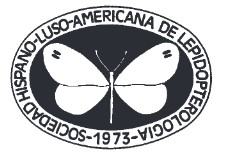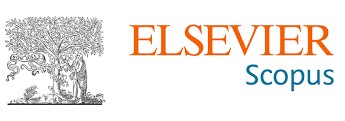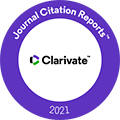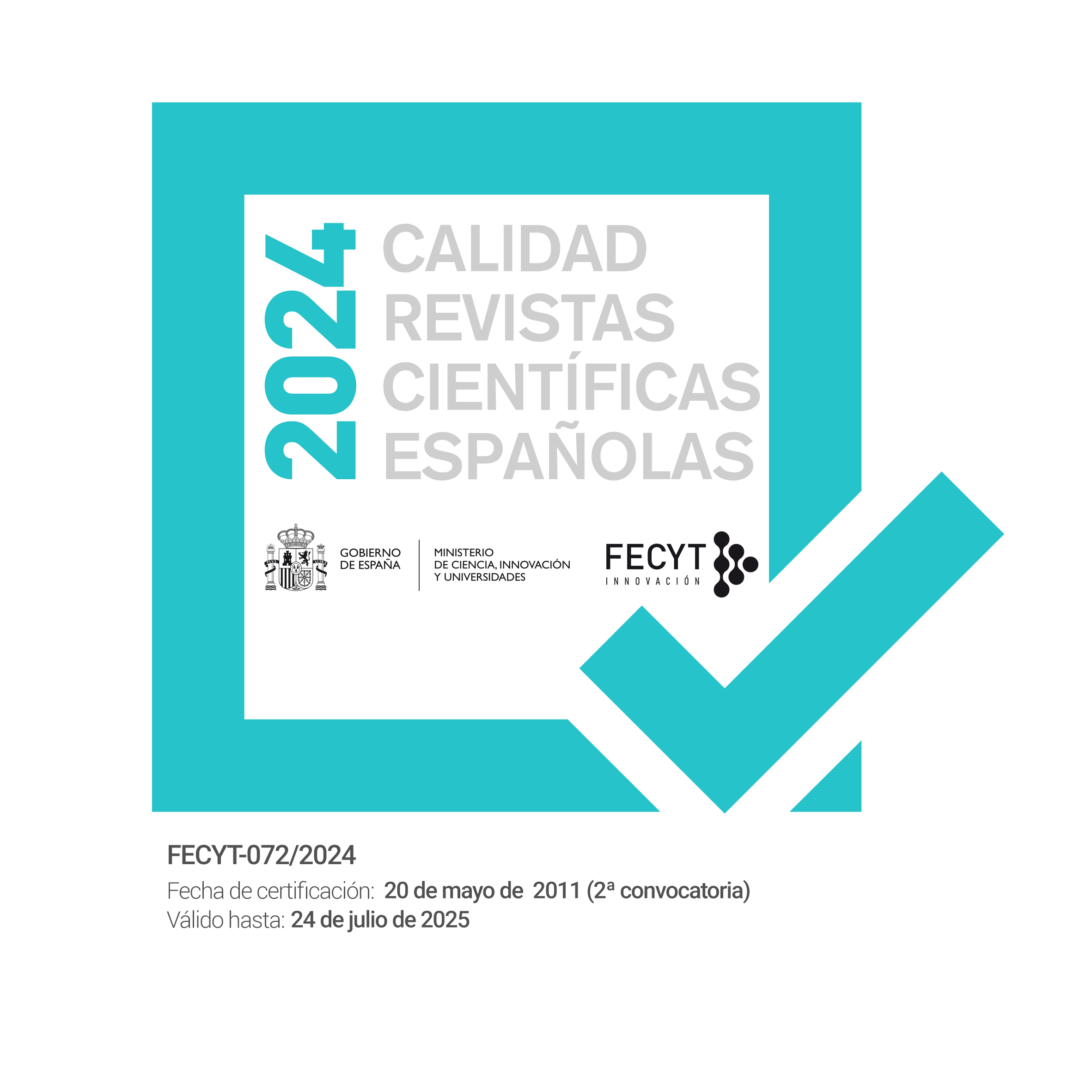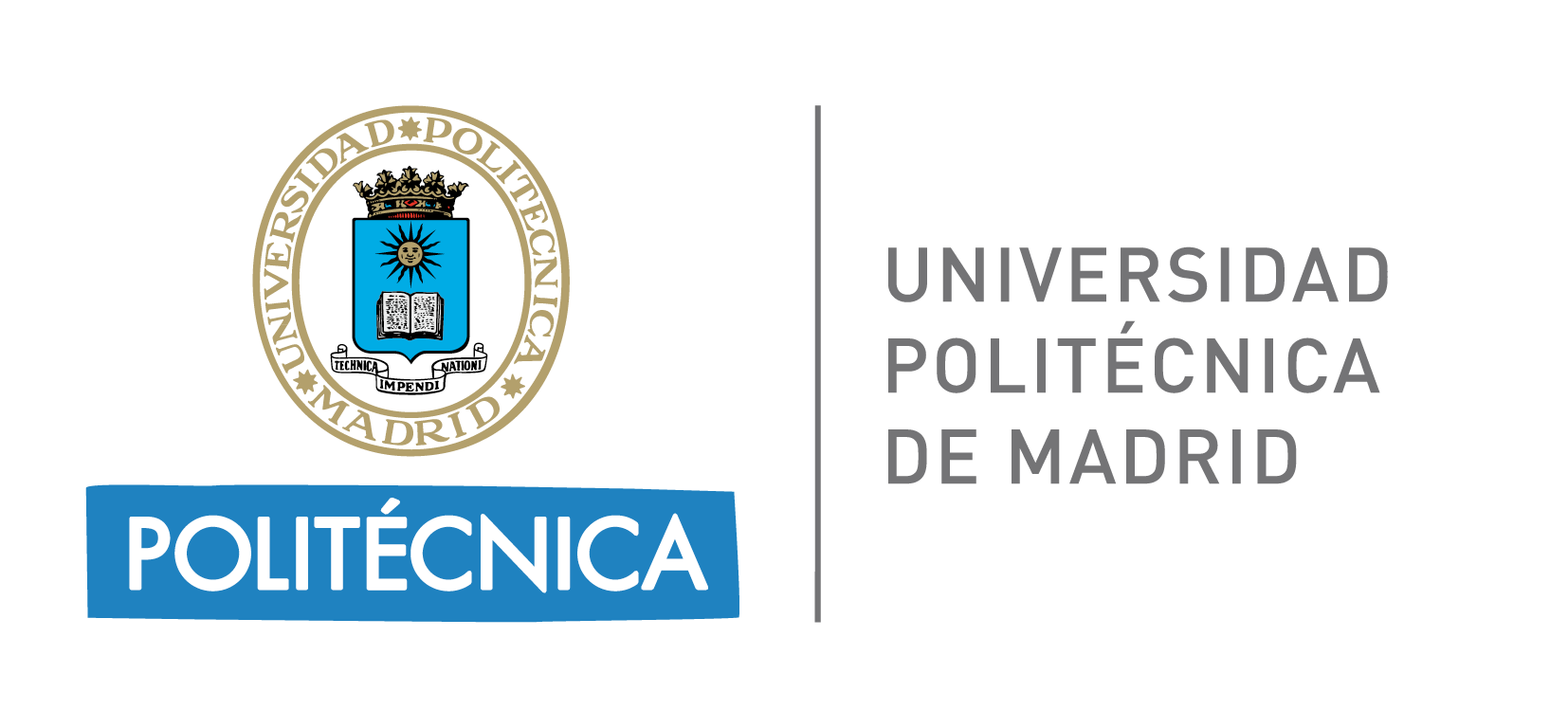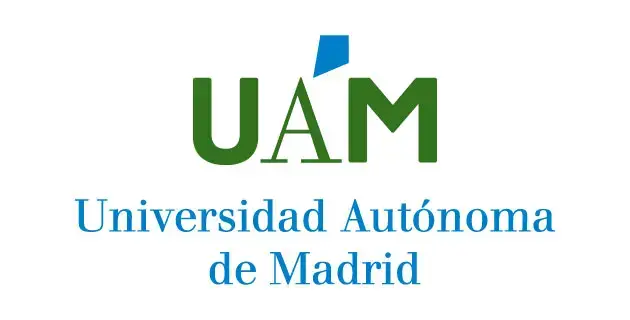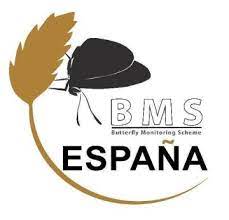Primer descubrimiento del parasitoide natural de los huevos de Cydalima perspectalis (Walker, 1859) en Turquía con métodos moleculares (Lepidoptera: Crambidae)
DOI:
https://doi.org/10.57065/shilap.253Palabras clave:
Lepidoptera, Crambidae, Cydalima perspectalis, Trichogramma evanescens, filogenia, espaciador transcrito interno 2, subunidad I de la citocromo oxidasa, TurquíaResumen
El género Trichogramma Westwood, 1833 es un importante agente de control biológico, especialmente de plagas de Lepidoptera, en todo el mundo. Estas diminutas avispas no pueden ser identificadas de forma fiable debido a su pequeño tamaño y a la falta de caracteres morfológicos definibles. La identificación basada en la secuencia ITS2 (Internal transcribed spacer 2) se ha realizado con éxito durante años para los parasitoides del género Trichogramma. El uso de especies autóctonas de Trichogramma contra las plagas es muy importante para el éxito del control biológico. Por lo tanto, la identificación exacta y precisa de las especies de Trichogramma desempeña un papel fundamental en los programas de control biológico. En el estudio, los parasitoides de huevos se obtuvieron de masas de huevos parasitados de Cydalima perspectalis (Walker, 1859) recogidos en la provincia de Hatay de Turquía en mayo de 2021. Se recogieron avispas Trichogramma y se determinó una sola especie mediante el uso de secuencias ribosómicas y mitocondriales. Según los resultados de las secuencias ribosómicas y mitocondriales, se determinó que todas las muestras recogidas eran Trichogramma evanescens Westwood, 1833. Este es el primer informe de T. evanescens como parasitoide de huevos de C. perspectalis en el mundo.
Descargas
Estadísticas globales ℹ️
|
809
Visualizaciones
|
400
Descargas
|
|
1209
Total
|
|
Citas
Ak, K., Sari, Ö., Altar, K., & Yarar, H. (2021). Hatay ili rimrir alanlarında yeni bir zararlı, Cydalima perspectalis (Walker, 1859) (Lepidoptera: Crambidae). Artvin Çoruh Üniversitesi Orman Fakültesi Dergisi, 22(1),109-116. DOI: https://doi.org/10.17474/artvinofd.893012
Akinci, H. A., & Kurdoglu, O. (2019). Damage level of Cydalima perspectalis (Lepidoptera: Crambidae) on naturally growing and ornamental box populations in artvin, Turkey. Kastamonu Üniversitesi Orman Fakültesi Dergisi, 19(2),144-151.
Bonhof, M. J. (2000). The impact of predators on maize stem borers in coastal Kenya [Tesis]. Wageningen University.
Bird, S., Raper, C., Dale-Skey, N., & Salisbury, A. (2020). First records of two natural enemies of box tree moth, Cydalima perspectalis (Lepidoptera: Crambidae), in Britain. The British Journal of Entomology and Natural History, 33, 67-70.
Borba, R. S., Garcia, M. S., Kovaleski, A., Oliveira, A. C., Zimmer, P. D., Branco, J. S. C., & Malonen. G. (2005). Genetic dissimilarity of lines of Trichogramma Westwood (Hymenoptera: Trichogrammatidae) through ISSR markers. Neotropical Entomology, 34, 565-569. DOI: https://doi.org/10.1590/S1519-566X2005000400005
Borghuis, A, Pinto, J. D., Platner, G. R., & Stouthamer, R. (2004). Partial cytochrome oxidase II sequences distinguish the sibling species Trichogramma minutum Riley and Trichogramma platneri Nagarkatti. Biological Control, 30, 90-94. DOI: https://doi.org/10.1016/j.biocontrol.2003.09.015
CABI (2021). Invasive Species Compendium. https://www.cabi.org/isc/datasheet/118433
Can Cengiz, F., Ularlı, B., Kaya, K., & Moriniere, J. (2016). First of the egg parasitoids of Chilo partellus (Swinhoe) (Lepidoptera: Crambidae) in Turkey using DNA barcoding. Turkish Journal of Entomology, 40(2), 125-131. DOI: https://doi.org/10.16970/ted.80849
Correa, M. C. G., Palero, F., Dubreuil, N., Etienne, L., Hulak, M., Tison, G., Warot, S., Crochard, D., Ris, N., & Kreiter, P. (2016). Molecular characterization of parasitoids from armoredscales infesting citrus orchards in Corsica, France. Biological Control, 61(6), 639-647. DOI: https://doi.org/10.1007/s10526-016-9752-1
Çalırkan-Keçe, A. F., Ularlı, B. T., & Ulusoy, M. R. (2020). Mealybugs (Hemiptera: Pseudococcidae) on ornamental plants in Eastern Mediterranean Region, Turkey. Acta Horticulture. XXX. IHC - Proceedings II International Symposium on Innovative Plant Protection in Horticulture: 221-230. DOI: https://doi.org/10.17660/ActaHortic.2020.1269.30
EPPO (2019). Global Database: Reporting Service no. 06-2019. Num. Article: 2019/118, Update on the Situation of Cydalima perspectalis in the EPPO Region. https://gd.eppo.int/reporting/article-65482019
Ercan, F. S., Oztemiz, S., Tuncbilek, A. S., & Stouthamer, R. (2011). Sequence analysis of the ribosomal DNA ITS2 region in two Trichogramma species (Hymenoptera: Trichogrammatidae). Archives of Biological Sciences, 63(4), 949-954. DOI: https://doi.org/10.2298/ABS1104949E
Ercan, F. S., Oztemiz, S., & Tuncbilek, A. (2013). Mitochondrial and ribosomal DNA sequence analysis for discrimination of Trichogramma euproctidis Girault and Trichogramma brassicae Bezdenko (Hymenoptera: Trichogrammatidae). Turkish Journal of Entomology, 37(2), 195-201.
Hadded, K., Kalaentzis, K., & Demetriou, J. (2020). On track to becoming a cosmopolitan invasive species: First record of the box tree moth Cydalima perspectalis (Lepidoptera: Crambidae) in the African continent. Entomologia Hellenica, 29(2), 27-32. DOI: https://doi.org/10.12681/eh.23483
Hampson, G. F. (1896). The Fauna of British India, including Ceylon and Burma (Vol. 4). Taylor & Francis.
Hassan, S. A. (1995). Introduction to the “Effectiviness and Assessment” session. Les Colloq del'NRA, 73, 107-111.
Hebert,P. D. N, Cywinska, A., Ball, S. L., & Dewaard, J. R. (2003). Biological identifications through DNA barcodes. Proceedings of the Royal Society of London: Biological Sciences, 270(1512), 313-321. DOI: https://doi.org/10.1098/rspb.2002.2218
Hizal, E., Kose, M., Yesil, C., & Kaynar, D. (2012). The new pest Cydalima perspectalis (Walker, 1859) (Lepidoptera: Crambidae) in Turkey. Journal of Animal and Veterinary Advances, 11(3), 400- 403. DOI: https://doi.org/10.3923/javaa.2012.400.403
Inoue, H. (1982a). Pyralidae. In H. Inoue, S. Sugi, H. Kuroko, S. Moriuti, A. Kawabe & M. Owada. Moths of Japan (Vol. 1). Kodansha.
Inoue, H. (1982b). Pyralidae. In H. Inoue, S. Sugi, H. Kuroko, S. Moriuti, A. Kawabe & M. Owada. Moths of Japan (Vol. 2). Kodansha.
Kaygin, A. T. & Tardeler, C. (2019). Cydalima perspectalis (Walker) (Lepidoptera: Crambidae, Spilomelinae)’ in Türkiye’ de Cografi Yayılısı, Yarsam Döngüsü Ve Zararı. Bartın Orman Fakültesi Dergisi, 21(3), 833-847. DOI: https://doi.org/10.24011/barofd.578294
Kirpichnikova, V. A. (2005). Pyralidae. In P. A. Lehr. Key to the insects of Russian Far East. Trichoptera and Lepidoptera (Vol. 5, pp. 526-539). Dalnauka.
Marianelli, L., Iovinella, I., Strangi, A., Madonni, L., Efetov, K. A., Tarmann, G. M., Raiola, V., Baruzzo, F., Sabbatini, G. P., & Roversi, P. F. (2020). First record of the pest Artona (Fuscartona) martini Efetov, 1997 (Lepidoptera, Zygaenidae, Procridinae, Artonini) in European territory. Redia, 103, 3-7. https://doi.org/10.19263/REDIA-103.20.01 DOI: https://doi.org/10.19263/REDIA-103.20.01
Midega, C. A. O., Ogol, C. K. P. O., & Overholt, W. A. (2004). Effect of agroecosystem diversity on natural enemies of maize stemborers in coastal Kenya. International Journal of Tropical Insect Science, 4(4), 280-286. DOI: https://doi.org/10.1079/IJT200441
Mitchell, R., Chitanava, S., Dbar, R., Kramarets, V., Lehtijrvi, A., Matchutadze, I., Mamadashvili, G., Matsiakh, I., Nacambo, S., Papazova-Anakieva, I., Sathyapala, S., Tuniyev, B., Vétek, G., Zukhbaia, M., & Kenis, M. (2018). Identifying the ecological and societal consequences of a decline in Buxus forests in Europe and the Caucasus. Biological Invasions, 20, 3605-3620. DOI: https://doi.org/10.1007/s10530-018-1799-8
Nagarkatti, S., & Nagaraja, H. (2009). Redescriptions of some known species of Trichogramma showing the importance of the male genitalia as a diagnostic character. Bulletin of Entomological Research, 61, 13-31. DOI: https://doi.org/10.1017/S0007485300057412
Park, I. K. (2008). Ecological characteristic of Glyphodes perspectalis. Korean Journal of Applied Entomology, 47, 299-301. DOI: https://doi.org/10.5656/KSAE.2008.47.3.299
Pinto, J. D., Velten, R. K., Platner, G. R., & Oatman, E. R. (1989). Phenotypic plasticity and taxonomic characters in Trichogramma (Hymenoptera: Trichogrammatidae). Annals of the Entomological Society of America, 82, 414-425. DOI: https://doi.org/10.1093/aesa/82.4.414
Pinto, J. D., Platner,G. R., & Stouthamer, R. (2003). The systematics of the Trichogramma minutum complex (Hymenoptera: Trichogrammatidae), a group of important North American biological control agents: the evidence from reproductive compatibility and allozymes. Biological Control, 27, 167-180. DOI: https://doi.org/10.1016/S1049-9644(02)00190-1
Ratnasingham, S., & Hebert, P. D. (2007). BOLD: The barcode of life data systems. Molecular Ecology Notes, 7, 355-364. DOI: https://doi.org/10.1111/j.1471-8286.2007.01678.x
Rugman-Jones, P. F., Wharton, R., Noort, T., & Stouthamer, R. (2009). Molecular differentiation of the Psyttalia concolor (Szépligeti) species complex (Hymenoptera: Braconidae) associated with olive fly, Bactrocera oleae (Rossi) (Diptera: Tephritidae), in Africa. Biological Control, 49, 17-26. DOI: https://doi.org/10.1016/j.biocontrol.2008.12.005
Sari, T., & Çelikel, F. G. (2019). Türkiye’nin Rimrirleri (Buxus sempervirens ve Buxus balearica) ve Mevcut Tehditler. I. International Ornamental Plants Congress - VII. Süs Bitkileri Kongresi, 9-11 Ekim 2019, Bursa.
Stouthamer, R., Hu, J., Van Kan, F. J. P. M., Platner, G. R., & Pinto, J. D. (1999). The utility of internally transcribed spacer 2 DNA sequences of the nuclear ribosomal gene for distinguishing sibling species of Trichogramma. Biological Control, 43, 421-440. DOI: https://doi.org/10.1023/A:1009937108715
Stouthamer, R., Gai, Y., Koopmanschap, A. B., Platnerm, G. R., & Pinto, J. D. (2000). ITS-2 sequences do not differ for the closely related species Trichogramma minutum and T. platneri. Entomologia Experimentalis et Applicata, 95, 105-111. DOI: https://doi.org/10.1046/j.1570-7458.2000.00647.x
Sumer, F., Tuncbilek, A. S., Oztemiz, S., Pintureau, B., Rugman-Jones, P. F., & Stouthamer, R. (2009). A molecular key to the common species of Trichogramma of the Mediterranean region. Biological Control, 54, 617-624. DOI: https://doi.org/10.1007/s10526-009-9219-8
Symmes, H. (1984). Native stands of boxwood in modern Turkey. The Boxwood Bulletin. Boyce, 23(4), 76-79.
Thiruvengadam, V., More, R. P., Baskar, R., Jalali, S. K., Lalitha, Y., & Ballal, C. R. (2016). Differentiation of some indigenous and exotic trichogrammatids (Hymenoptera: Trichogrammatidae) from India based on Internal transcribed spacer-2 and cytochrome oxidase-I markers and their phylogenetic relationship. Biological Control, 101, 130-137. DOI: https://doi.org/10.1016/j.biocontrol.2016.07.005
Van Lenteren, J. C., & Woets, J. (1988). Biological and integrated pest control in greenhouses. Annual Review of Entomology, 33(1), 239-269. DOI: https://doi.org/10.1146/annurev.en.33.010188.001323
Van Der Straten, M. J., & Muus, T. S. (2010). The box tree pyralid (Glyphodes perspectalis (Walker 1859), Lepidoptera: Crambidae); an invasive alien moth ruining box trees. Proceedings of the Netherlands Entomological Society Meeting, 21, 107-111.
Venkatesan, T., Reetha, B., Jalali, S. K., Lalitha, Y., Ballal, C. R., Ravi, P. M., & Verghese, A. (2015). Molecular identification of egg parasitoid, Trichogramma species of India using COI and ITS-II regions and their phylogenetic relationships. Genome, 56(5), 291-29.
Wan, H., Haye, T., Kenis, M., Nacambo, S., Xu, H., Zhang, F., & Li, H. (2014). Biology and natural enemies of Cydalima perspectalis in Asia: Is there biological control potential in Europe? The Journal of Applied Entomology, 138, 715-722. DOI: https://doi.org/10.1111/jen.12132
Zimmermann, O., & Wuhrer, B. (2010). Initial investigations on the ability of the indigenous larval parasitoid Bracon brevicornis to control the Box tree pyralid Diaphania perspectalis in Germany. DGaaE Nachrichten, 24, 25-26.
Publicado
Cómo citar
Número
Sección
Licencia
Derechos de autor 2022 Feza Can, Fahriye Ercan, Basak Ulasli

Esta obra está bajo una licencia internacional Creative Commons Atribución 4.0.
El autor retiene sus derechos de marca y patente sobre cualquier proceso o procedimiento dentro del artículo.
El autor retiene el derecho de compartir, distribuir, ejecutar y comunicar públicamente el artículo publicado en SHILAP Revista de lepidopterología, con reconocimiento inicial de su publicación en SHILAP Revista de lepidopterología.
El autor retiene el derecho para hacer una posterior publicación de su trabajo, de utilizar el artículo a publicarlo en un libro, siempre que indique su publicación inicial en SHILAP Revista de lepidopterología.
Cada envío a SHILAP Revista de lepidopterología debe ir acompañado de una aceptación de los derechos de autor y del reconocimiento de autoría. Al aceptarlos, los autores conservan los derechos de autor de su trabajo y aceptan que el artículo, si es aceptado para su publicación por SHILAP Revista de lepidopterología, tendrá una licencia de uso y distribución “Reconocimiento 4.0 Internacional de Creative Commons” (CC BY 4.0), que permite a terceros compartir y adaptar el contenido para cualquier propósito dando el crédito apropiado al trabajo original.
Puede consultar desde aquí la versión informativa y el texto legal de la licencia. La indicación de la licencia CC BY 4.0 debe indicarse expresamente de esta manera cuando sea necesario.
A partir de 2022, el contenido de la versión impresa y digital se encuentra bajo una licencia de uso y distribución “Reconocimiento 4.0 Internacional de Creative Commons” (CC BY 4.0), que permite a terceros compartir y adaptar el contenido para cualquier propósito dando el crédito apropiado al trabajo original.
El contenido anterior de la revista se publicó bajo una licencia tradicional de derechos de autor; sin embargo, el archivo está disponible para acceso gratuito.
Al usar el contenido de SHILAP Revista de lepidopterología publicado antes del año 2022, incluidas figuras, tablas o cualquier otro material en formato impreso o electrónico pertenecen a los autores de los artículos, los autores deben obtener el permiso del titular de los derechos de autor. Las responsabilidades legales, financieras y penales a este respecto pertenecen al autor(es).
En aplicación del Principio de Prioridad del Código Internacional de Nomenclatura Zoologica, no se autoriza el depósito en repositorios, páginas web personales o similares de cualquier otra versión distinta a la publicada por el editor.





